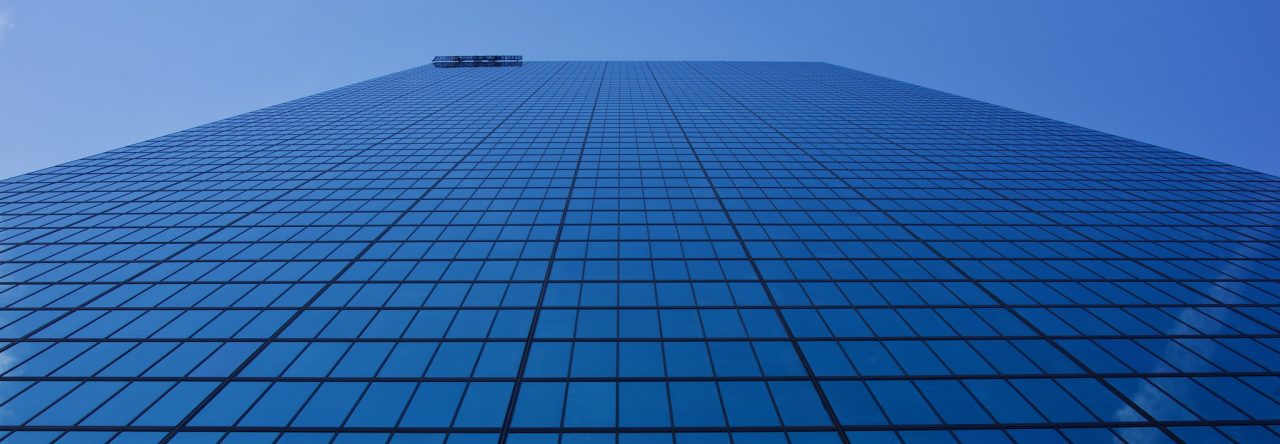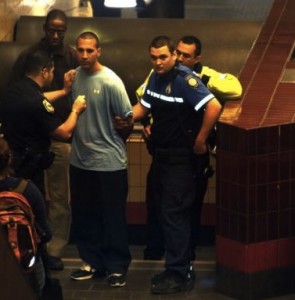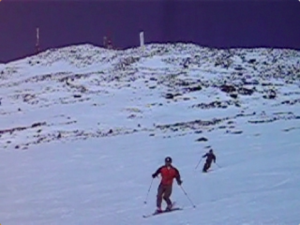Finished thesis to the best of my ability, and sent a complete draft to my advisor. Sold my large belongings and packed the rest into the car heading west. Sort of melancholy to leave, but I’ll be back in two weeks to tie up loose ends, so it’s not really goodbye yet.
Year: 2010 Page 4 of 5
Crossposted from Mondoweiss:
A recent post by Adam Horowitz asked what it will take for liberal Zionists to come around and support a boycott. My mind was changed by going to Israel on a Birthright trip and seeing firsthand the effects of the wall and checkpoints. However, I doubt that a full scale boycott of Israel will catch on in the American Jewish community. My recent project, the Boycott Toolkit, enables an open discussion of what exactly a boycott of the occupation should involve, lets users choose their own level of involvement, and lists concrete steps for action.
I was brought up in a religiously conservative but politically liberal Jewish community. While I was aware of and interested in politics, I didn’t consider myself an activist. Like most American Jews, I was aware of the ongoing peace process and lamented the inability of both sides to resolve their differences. A trip to Israel and the West Bank shattered my preconception of the two parties as equal antagonists, and convinced me to become more politically active and outspoken.
I joined a Taglit-Birthright trip in the summer of 2007 after graduating from college. Along with a group of twenty other young American Jews, I went to Israel for the first time and we did all the things that are supposed to connect us to our cultural and religious heritage. We met soldiers, visited Yad Vashem and cried at the Wailing Wall. We climbed Masada at dawn and surveyed the beautiful land that was once promised to our people, and was now ours.
However, while walking through the Old City of Jerusalem, or driving along highways to the Dead Sea, I could see that not all was well in this beautiful land. From a vantage point atop the ancient stone walls, a new concrete wall snakes across the landscape, and settlements stand out starkly on hilltops. Our bus was protected by an armed guard at all times, and he warned us sternly not to venture into Palestinian territory. Danger awaited there, kidnapping or lynching was possible, hatred and discrimination a certainty. He could not have been more wrong.
After the planned activities of the trip were over, we were released from the protection of the tour guides and guards. I returned to Jerusalem with two friends and took a bus to the Bethlehem checkpoint. We approached the monstrous concrete and steel gates with trepidation and entered the maw of the security zone. With our American passports, we were waved through by bored looking young women, really girls no older than I was, but who were surrounded by thick glass and armed with automatic weapons. The Palestinians were subject to more stringent checking, including a biometric scan of the veins in their hands. When I put my hand in the scanner, the guard gave me a withering look, as if it should be clear that I wasn’t subject to the same rules as everyone else in line. This sort of racial profiling may be effective, but it made my stomach churn.
Leaving the checkpoint, we entered a different world. While the Jerusalem side has a proper bus turnaround, in Bethlehem the road dead-ends into the wall and a throng of taxi drivers stand waiting for business. We were approached by a man with a yellow Mercedes, a baseball cap, and large weary eyes. Communicating through his broken English and our worse Arabic we negotiated a tour of the town, learning about its millennia of history and how it had changed since the wall cut it off from Jerusalem. We passed dozens of shuttered businesses and were taken to a dusty souvenir store that opened just for us. I bought ornaments I didn’t need to show my gratitude.
We only spent a few hours in Bethlehem that first time, and were relieved when we crossed the checkpoint back to Jerusalem. We would never see the city the same way again, knowing that an entirely different world lay on the other side of the wall. I have since returned to Israel and the West Bank many times, but crossing checkpoints still gives me the sense that I am crossing a land divided against itself, and that a great injustice is being done in my name.
Returning to the United States, I began graduate study at the MIT Media Lab with the Center for Future Civic Media. Research here is focused on building online tools for organizing real-world communities, and I set out to apply this knowledge to my community of interest: American Jews. I have released three projects that speak to this audience, which grew progressively more action-oriented.
In January 2009 I created VirtualGaza, a space for Gazans to break the information blockade by telling their own stories without a media filter. I spent the following summer meeting with Israeli and Palestinian activists in the West Bank. GroundTruth aggregates geographic information, the path of the wall and the green line, the location of Palestinian neighborhoods and Israeli settlements, the hundreds of checkpoints that disrupt traffic, and displays it in an interface familiar to users of Google Maps. Most of this information is published there for the first time in a reusable and open format. This project provides a local geographic context that is crucial to understanding the reality on the ground.
For my masters thesis, I am building an application to organize collective economic action, inspired by the BDS movement and the concept of smart sanctions. While a wholesale boycott of Israel can engender hostile feelings in even liberal American Jews, the Boycott Toolkit provides detailed information on specific companies and their relationship to the conflict. It asks users to take either positive or negative action by buying or boycotting products, and is open for community contributions. Building upon work by WhoProfits and Gush Shalom, the Boycott Toolkit already includes information on companies that are based in the settlements and industrial zones, vineyards in the occupied Golan Heights, and Palestinian products that support peaceful development. Stores that sell these products are listed and mapped, so consumers can alter their economic behavior to match their politics.
If you see products you recognize, please add stores in your area that sell them, so that we can track our impact in our own local communities. If you have other information about corporate complicity in the occupation, please add it so we can all benefit from your research. I know that these projects by themselves will not resolve the conflict. But if we can change the minds of other Jews like myself, who are vaguely aware of the issues but feel powerless to do anything about it, all our small actions taken together can bring us closer to peace.
Josh Levinger is a graduate student and researcher at the Center for Future Civic Media at MIT, where his work lies at the intersection of technology and politics.
Backdating this, because I forgot to write about it at the time…
This morning while riding the T to work, I was a witness to a police action on the Red Line. A man got on at Harvard, wearing a loose blue shirt and looking a little sketchy, but no more so than any of the regular drunks in the square. He sat across from me, next to a colleague of mine at the lab, and the train departed. We got perhaps a third of the way to Central when the conductor stopped and announced there was a “switching problem ahead”, and that we were going back. I looked at my friend, rolled my eyes, and prepared for a long wait.
When we got back to Harvard, I two police officers started walking up the train, one in the central aisle and one outside the car. The one outside stopped next to my friend, pointed at the man next to him through the window, and the officer inside drew his weapon and barked “show me your hands!” My friend put his Kindle down in bewilderment, the man next to him rolled his hands over, displaying a red dye on his palms. The cop said something like “easy, buddy”, turned him around roughly, and cuffed him. A man further down the car said “he put something in the cabin at the end”, and other officers got on the car and told the passengers to leave. I exited and moved several cars down, expecting that we would be on our way shortly. The conductors came on the loudspeaker again and told us that the train was being taken out of service, and to go upstairs to the inbound platform. We did, and I got to the lab only slightly later than usual, with no clear idea of what had happened.
Checking WickedLocal and the Globe, I learned that Robert Carney, 34, of Everett, was arrested on suspicion of robbing the Citizens Bank at 6 JFK St. Apparently he passed a note to the teller, she gave him a bag of money, and the dye pack exploded in his hands. I’m surprised he chose to escape via the T, when it was so easy for the police to shut it down and trap him there. But apparently he wasn’t the only guy who thought this was a good idea, as it happened again the next week.
Today was just about perfect. I woke at 5:30 having only slept a few hours, picked up Drew, Greg and Jeff, and headed north. Three hours of driving, and one obligatory stop at Einstein’s later, we were at the Cog Railway base and faced with a crowded parking lot. Seems like other people noticed the recent snowfall and nice weather. No worries, there’s plenty of room on the mountain for everyone.
We ascended the Ammonoosuc Ravine trail, which I hadn’t climbed since I was 12. It’s steeper than I remember, but one of the more direct routes to the summit on the west side. I wasn’t in peak physical condition, thanks to my lack of sleep and thesis belly, but I made it eventually. 3.8 miles, 3700 feet and three hours later, we were at the summit with skis on. Triumphant pictures were taken, and lunch was consumed in the protective windscreen of the oldest building on the summit. We skied the back towards Lakes of the Clouds, harvesting the fresh corn that had softened in the afternoon sun. I stopped to take a nap while the other guys climbed back up for extra laps.
With clouds appearing and shadows starting to creep across our exit path, we decided to pack it in around 3:30. We traversed to Lakes of the Clouds, skiing across the lake surface and down Monroe Brook. We didn’t find the steepest entrance, but the ride was still great. The lower surface was littered with debris from previous avalanches, and I was glad we were here late in the season, when the snow is already condensed. We passed the Nadya Peek memorial brook, where she fell in on this trip last year and noted her absence with a long discussion on PID controls. Got to the car around 5 exhausted, smelly and happy. Three more hours of driving and I was back home, where I collapsed in bed to sleep like the dead. The sign of a day well spent.
I saw this poem mentioned in a letter to the IHT in response to Elie Wiesel’s full page ad.
Can I forget thee, o Jerusalem?
Tourists by Yehuda Amichai
Visits of condolence is all we get from them.
They squat at the Holocaust Memorial,
They put on grave faces at the Wailing Wall
And they laugh behind heavy curtains
In their hotels.
They have their pictures taken
Together with our famous dead
At Rachel's Tomb and Herzl's Tomb
And on Ammunition Hill.
They weep over our sweet boys
And lust after our tough girls
And hang up their underwear
To dry quickly
In cool, blue bathrooms.
Once I sat on the steps by agate at David's Tower, I placed my two heavy baskets at my side. A group of tourists was standing around their guide and I became their target marker. "You see that man with the baskets? Just right of his head there's an arch from the Roman period. Just right of his head." "But he's moving, he's moving!" I said to myself: redemption will come only if their guide tells them, "You see that arch from the Roman period? It's not important: but next to it, left and down a bit, there sits a man who's bought fruit and vegetables for his family."


